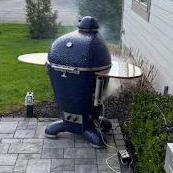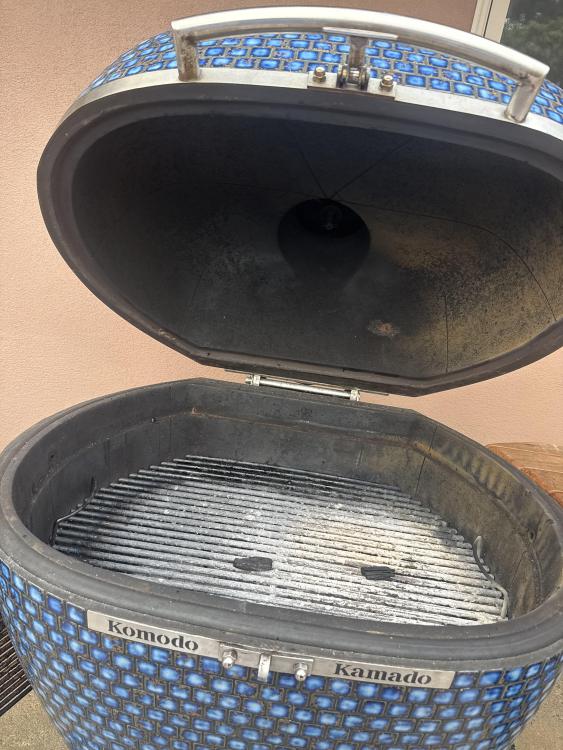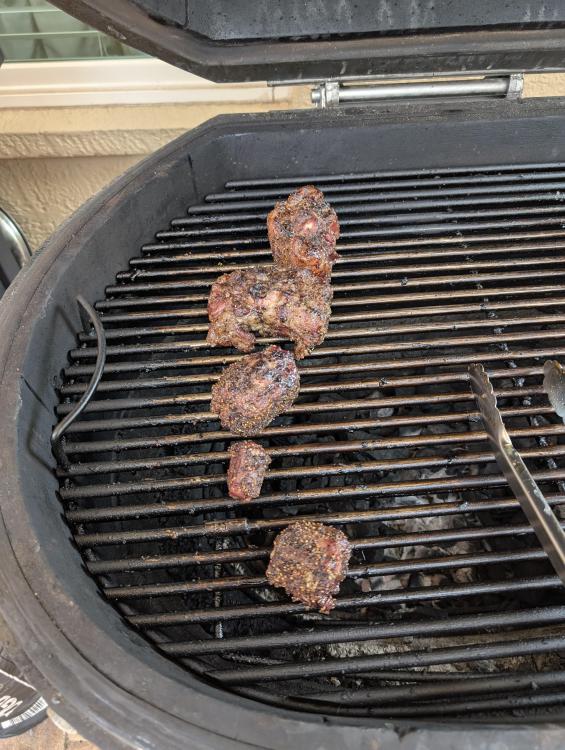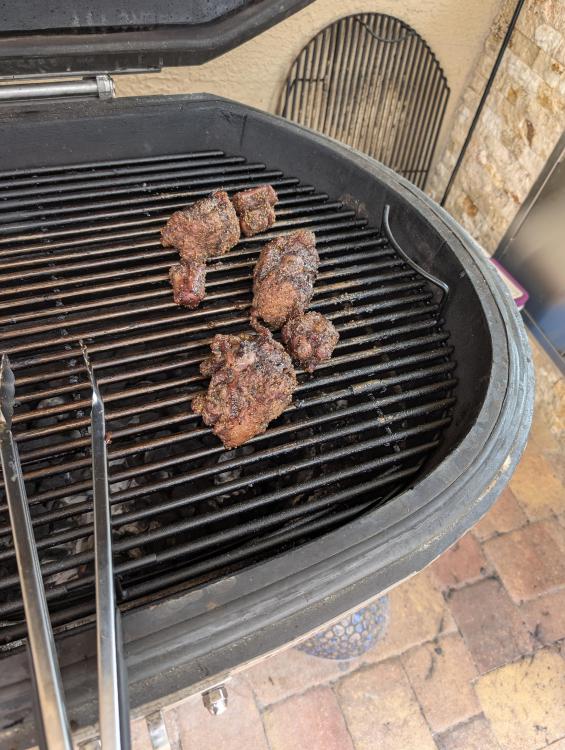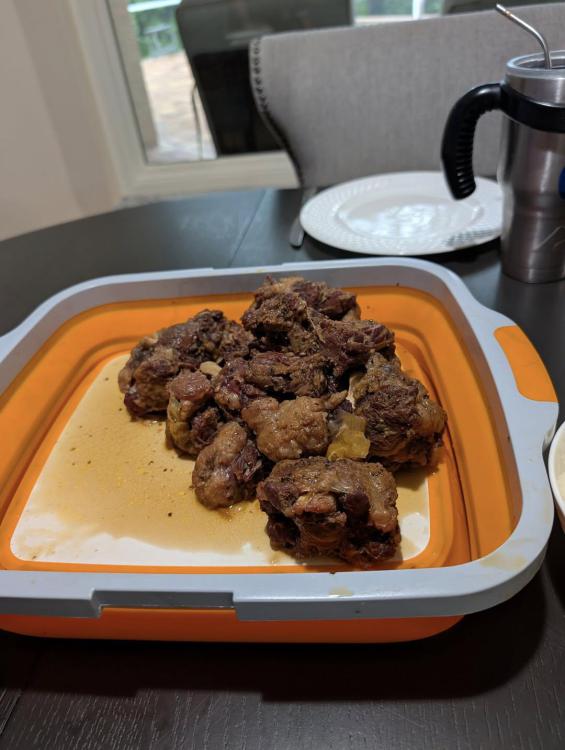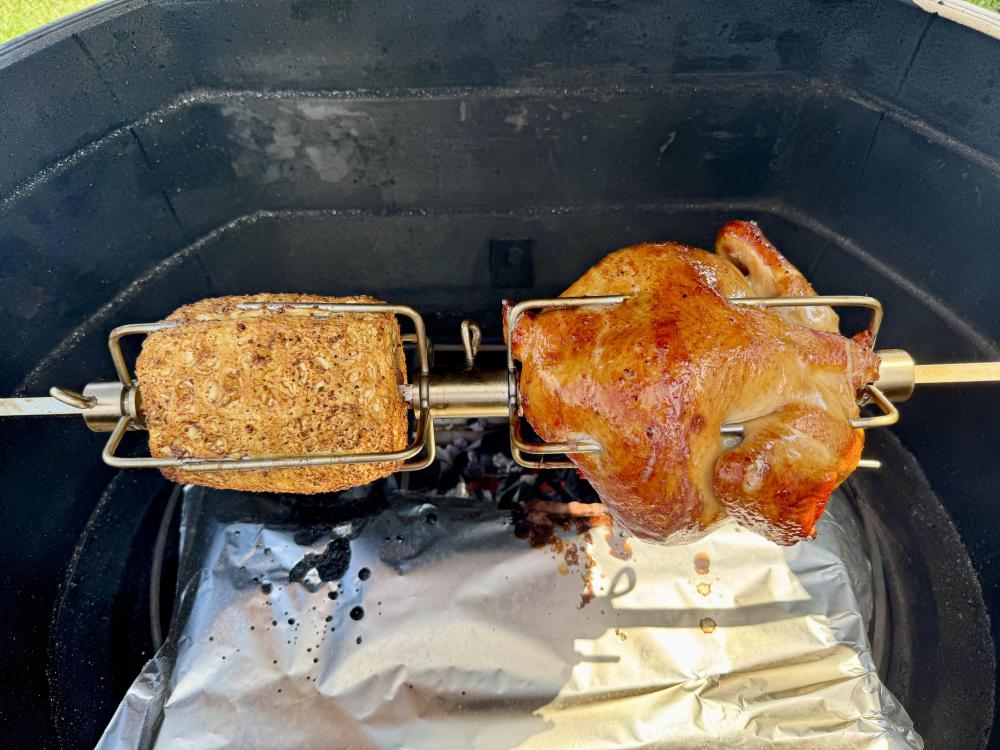All Activity
- Past hour
-

Help - big fire - do I need to do anything to fix grill ?
DennisLinkletter replied to JordanLitro's topic in Komodo General
I suggest you don't do anything. That black jacket of oil and smoke protects the material from moisture. Cement is hydroscopic, but the oil in the walls makes it hydrophobic.. - Today
-
MacKenzie started following Help - big fire - do I need to do anything to fix grill ?
-

Help - big fire - do I need to do anything to fix grill ?
MacKenzie replied to JordanLitro's topic in Komodo General
You are good to go on a daytime batch of ribs. -
SteveL started following Best Happy Father's Day cake ever! and First time oxtail cook
-
Looks delicious! Sent from my iPad using Tapatalk
-
That’s fantastic! Sent from my iPad using Tapatalk
- Yesterday
-

Help - big fire - do I need to do anything to fix grill ?
C6Bill replied to JordanLitro's topic in Komodo General
I saw your pic in the other thread you started. I replied to that one, you are fine. I'd also suggest watching a lot of the instructional videos here on the site, Dennis makes the process really simple. -

Help - big fire - do I need to do anything to fix grill ?
C6Bill replied to JordanLitro's topic in Komodo General
The grill is absolutely fine. But two things, there is no need to be cooking ribs overnight. And I wouldn't suggest using the lower grate, the main grate is perfect for ribs. Try this. Four hours at 250 then wrap in foil and cook for another hour. You can adjust from there 👍 -
I have the MEATER block probes and wired ThermoWorks probes. I only use MEATER probes for rotisserie cooks. They work fine but they need to be pushed so deep into the food that for small cooks they can be impractical.
-

Help - big fire - do I need to do anything to fix grill ?
NapDogg replied to JordanLitro's topic in Komodo General
^^^ And if you really want to turn lemons into lemonade —have pizza ready to throw in when it’s clean and at temp! -

Help - big fire - do I need to do anything to fix grill ?
5698k replied to JordanLitro's topic in Komodo General
If you’re concerned, get a hot fire going, about 600*, and let her rip. Hotter isn’t really necessary. If you’re up to it, let it burn a basket of coal completely. It’ll be clean enough after that. Sent from my iPad using Tapatalk -
Help - big fire - do I need to do anything to fix grill ?
JordanLitro replied to JordanLitro's topic in Komodo General
IMG_1197.mov -
Ugh! The Komodo was a bit low 190-200 when I set at the usual 225 settings for smoking So I left the intake the same but opened the damper up... and after 30 mins was 225... Put ribs on and went to bed last night And woke up to black burnt to a crisp ribs and grill at 400 !! Grill is super black inside You think after I take everything out and clean it I can cook again ? My fear is the burnt stench is caked inside Not sure if ok to cook again Or if there is something more I am supposed to do?
-
JordanLitro joined the community
- Last week
-
jdbower started following Best Happy Father's Day cake ever!
-
Fun fact: The one in the background is actually the cake, the foreground is a decoy
-
Best Happy Father's Day cake ever!
Glendavid890 replied to DennisLinkletter's topic in Komodo General
Wow, this cake looks absolutely beautiful and delicious! I had a very similar one made for my anniversary—it was incredibly tasty and made our special day even more enjoyable. I still remember that I ordered it from Delicia Bakery. The price was very reasonable, and the quality was truly exceptional. -
Glendavid890 joined the community
-
I keep my FireBoaord turned on even when I'm controlling manually. I like to have a log of what I did and what happened as a result, so I can learn a little bit along the way, without having to actually pay much attention in the moment.
-
I felt similarly to Cheesehead Griller when I bought mine. I went from a gas grill to a KK and was uncertain about temp control. I bought the ThermoWorks RFX system with their Billows fan controller. I probably used the Billows for the first ten cooks and haven’t used it since. I find the KK very easy to to get to temperature and keep it there. As Dennis has said, once you get it to temperature it stays there. I do use the RFX temperature Gateway and probes for internal meat temperature and have had no problems. I have called ThermoWorks customer support a couple of times and they have been very helpful. Sent from my iPad using Tapatalk
-
SteveL started following Wireless Thermometers
-
Apollo 12 needed to land within walking distance of the Surveyor 3 robotic probe. The moon's lumpy gravity proved a challenge for Apollo 11's landing, so NASA introduced a feedback loop, and nearly landed on top of the Surveyor. The poster child for this cooking debate would be salt. Many people are fiercely proud of portioning salt by eye. Cooking is part theatre, and making a show of pinching salt as a restaurant chef would do is good theatre. We can taste the difference for each 0.1% step of salt by meat or fish weight, and we've never met anyone who can eye salt to this accuracy, so we measure. We like to land within walking distance. A KK with no controller is astonishingly stable, but needs periodic adjustments. Fixed settings determine the geometry of the airflow, and oxygen determines heat production, but this isn't what an engineer calls a stable equilibrium. Open the lid to tend to the meat, and with greater airflow the fire gets hotter. Hotter air generates a greater pressure differential through the fixed geometry of the airflow, which increases the airflow, which sustains a hotter fire. Even if one never opens the lid, nighttime changes in outdoor temperature, and variations in the evolution of the fire, can similarly change the airflow for a fixed opening geometry. This is a mild effect, but every 15 degrees affects the cook. One either embraces these variations as the romance of barbecue, or periodically steers.
-
Smoked for a few hours with a Texas BBQ rub, then braised in a dutch oven for almost five hours with onions, garlic, beef and chicken stock. During the braising the temperature up at the top of the dome as between 350 and 400, The smoking was more in the 250 degree range.
-
-
That definitely does not look like refractory cement..
-
AliMac23 spun this beautiful 12kg piggy using a spit, which can be much more challenging to get centered than using the cradle. But you can't argue with the results!
-
Best to try to fill the tears from the bottom up.. Get the acrylic material as far down in the tear as possible. Blunt tip 14 gauge syringe https://www.youtube.com/shorts/9jiyK6an5b4 Syringe 20 or 50ml Blunt Glue Dispensing Needle 14Ga
- Earlier
-
It really is the easiest kamado when it comes to temp control. Whatever works best for you is the best method
-
I felt I needed a fan and controller in the beginning of my KK journey. I needed the comfort that I could sleep all night and not worry about the KK or meat. However, the cords, electronics, etc. seemed to cause more stress. In the beginning, I also had issues with consistent burning lump in long cooks. I started filling my charcoal basket with lump as well as a chimney. I let the chimney coals get ripping hot and then poured them over the charcoal basket. I've NEVER had any issues since. I now do this method to assure I have a solid coal base to keep the KK going for a long time. I now sleep like a baby during overnight cooks. In fact, the last one I did I almost forgot I had something on the KK when I woke up. Lol. One other drawback of a fan was that it blew ash all over inside the KK.
-

How to move a Kamado to a backyard when there is cement pathway?
C6Bill replied to bbqking103's topic in Komodo General
I believe he has a 23 as he was looking for a new latch a few weeks ago. @bbqking103

